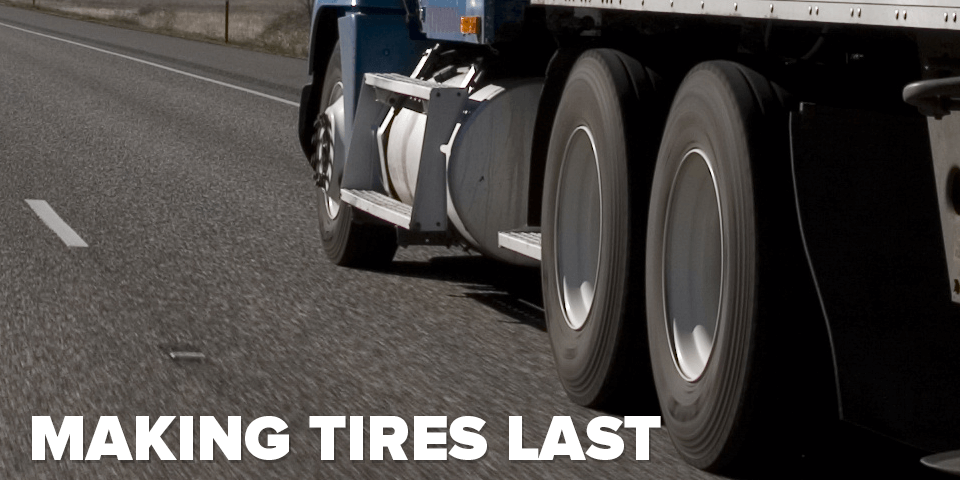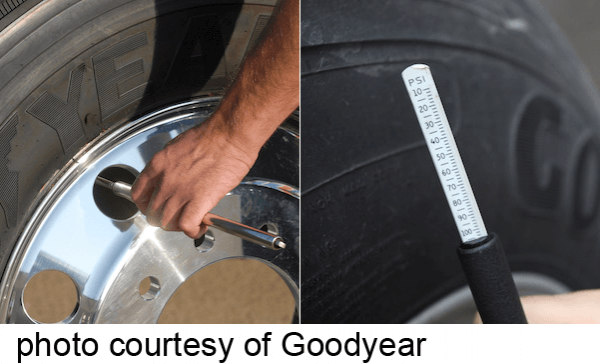
Making Tires Last
Properly maintaining your truck's tires not only keeps you (and the public) safer on the road but also saves you a lot of money.
As results from tests conducted by Goodyear show, just 15 percent underinflation of steer, drive and trailer tires results in about an 8 percent drop in expected tire life and a 2.5 percent reduction in fuel economy. And according the American Trucking Associations Technology and Maintenance Council, a constant 20 percent underinflated condition reduces the life of a tire by 30 percent, and 40 percent underinflation cuts tire life in half.
So, what can you do to maximize tire life and lower your truck's operational costs? EO spoke with Brian Buckham, general manager, product marketing for Goodyear, who shared these five tips.
Tip #1: Choose the right tires for the application.
Buckham recommends that expediters work closely with a qualified commercial tire dealer to select the most appropriate tires for the application and each position -- steer, drive, and trailer -- on the truck. "Before selecting tires, drivers should first define what their tires will be 'asked' to do," says Buckham. "Equipping trucks with the wrong tires can lead to suboptimal performance."
Tip #2: Regularly check tire pressure.
Buckham says that both overinflation and underinflation alter a tire's footprint, increasing the likelihood of irregular and premature wear. "Underinflation can be especially problematic because it causes tires to flex more as they roll down the highway, which can result in heat build-up," says Buckham. "Underinflation also hurts fuel economy since underinflated tires force truck engines to work harder. We recommend that drivers check their truck's tire inflation pressure levels once a week, and more often, if possible."
Tip #3: Ensure proper wheel alignment.
"Keeping a truck properly aligned may seem like an expensive proposition, but it's an investment that can pay big dividends when it comes to achieving longer tire life. Over time, a regular alignment program can boost tire mileage and reduce the occurrence of irregular tread wear," says Buckham.
Truck misalignment also impacts fuel economy, says Buckham. "If any of the wheels on an 18-wheel tractor-trailer are not in alignment, the total drag on the vehicle increases. When the tractor and trailer are not tracking parallel to the direction of travel, aerodynamic drag will increase."
Tip #4: Conduct regular inspections.
"Regular visual and tactile (touch) inspections of a truck tire can provide a lot of useful information about its condition," says Buckham. "Things to check for include unusual wear patterns like feathering and cupping. It's important for drivers to make immediate note of unusual wear patterns. If detected early enough, unusual wear patterns can be countered or corrected to help extend tire life. A tactile examination to look for cuts, cracks, blisters and bulges can also yield useful information."
Click Here for examples of what to look for in wear patterns.
Tip #5: Improve driving habits.
"Gradual acceleration and braking is always better than hard, abrupt acceleration and braking," says Buckham. "Turning corners at slower speeds while avoiding curb impact and excessive scrubbing will prolong tire life, as well. Like tire maintenance, driving is a factor you can control."
The Bottom Line
The economics of maximizing tire life is simple. The more miles you can get out of tires, the fewer tires you need to buy over the life of your truck. And that means more money you get to keep to grow your business and support your family.
